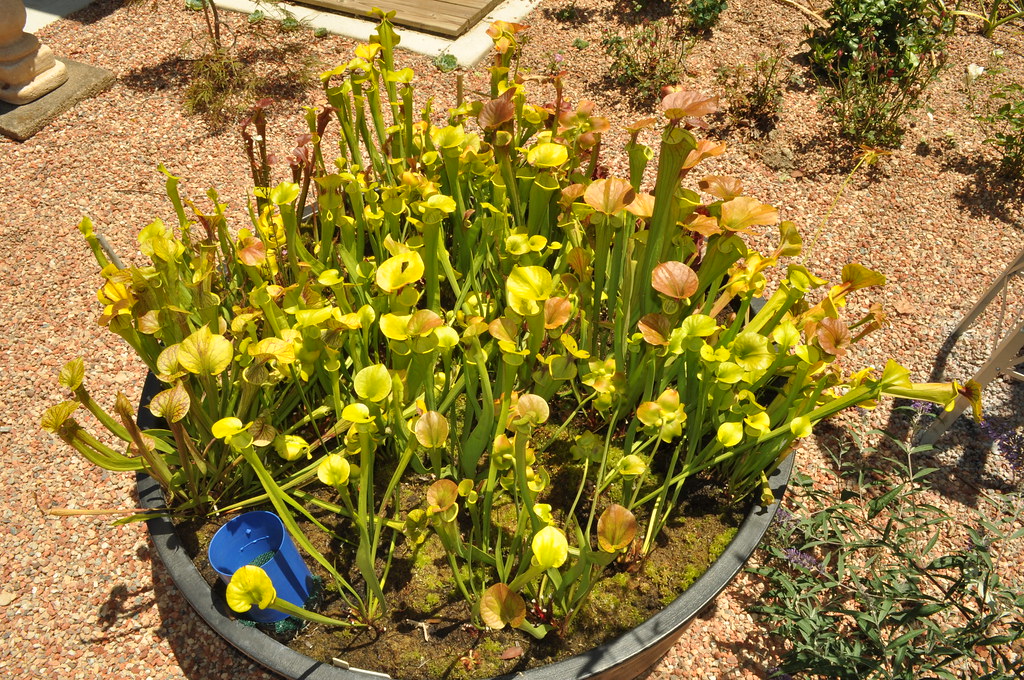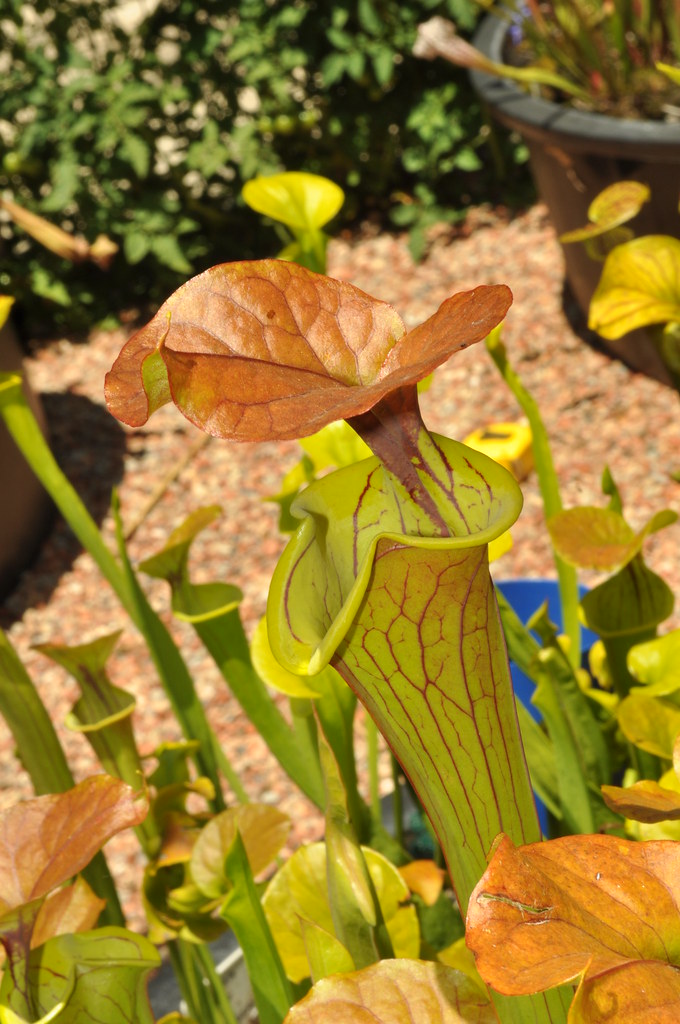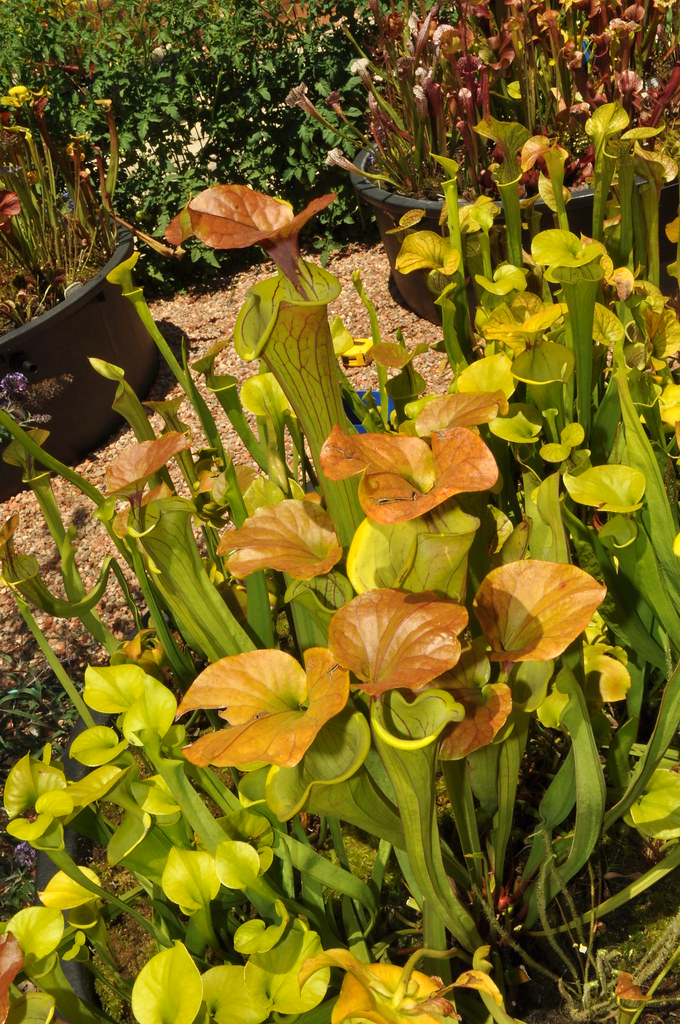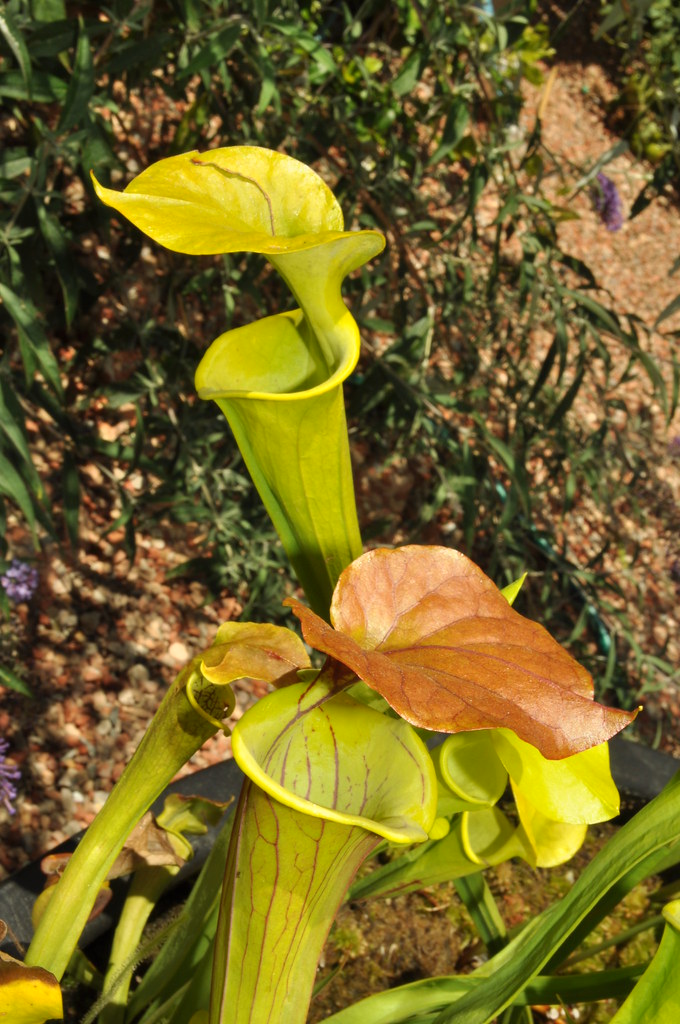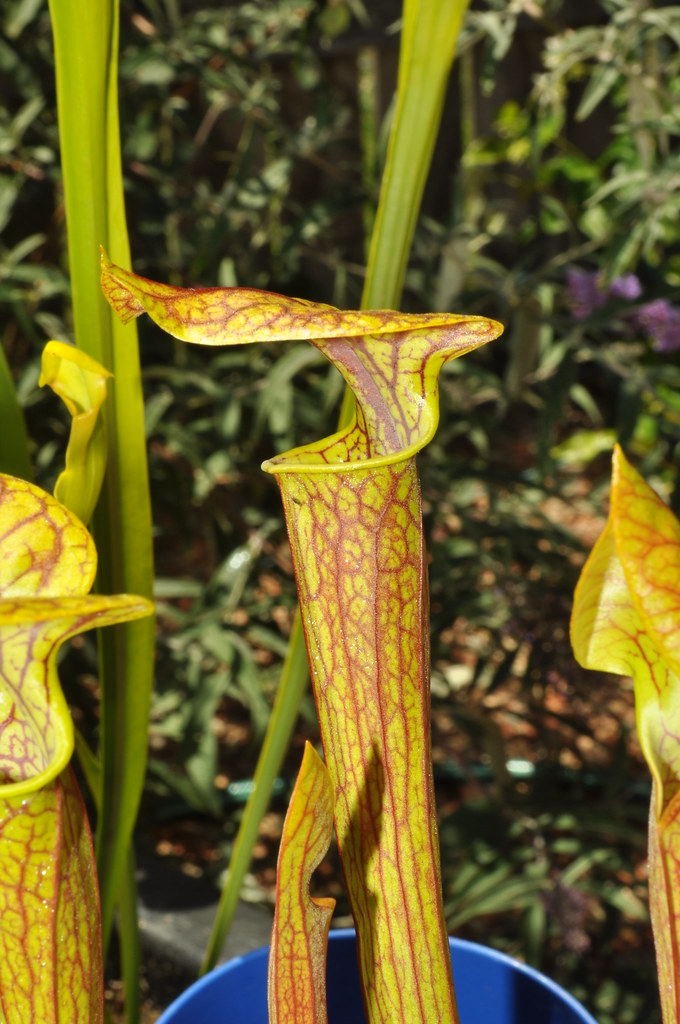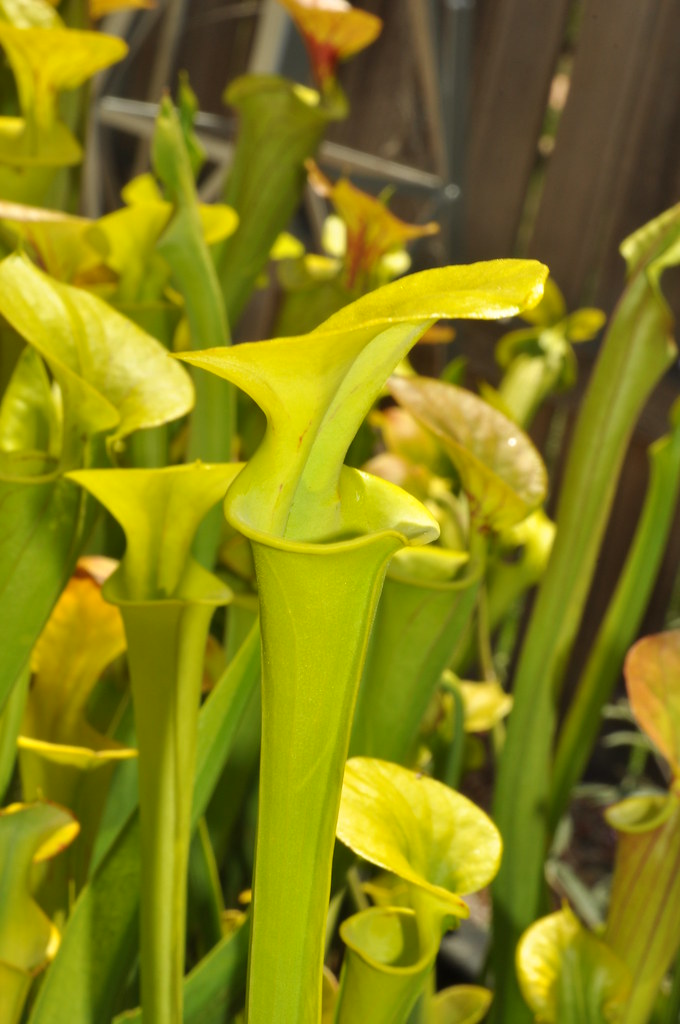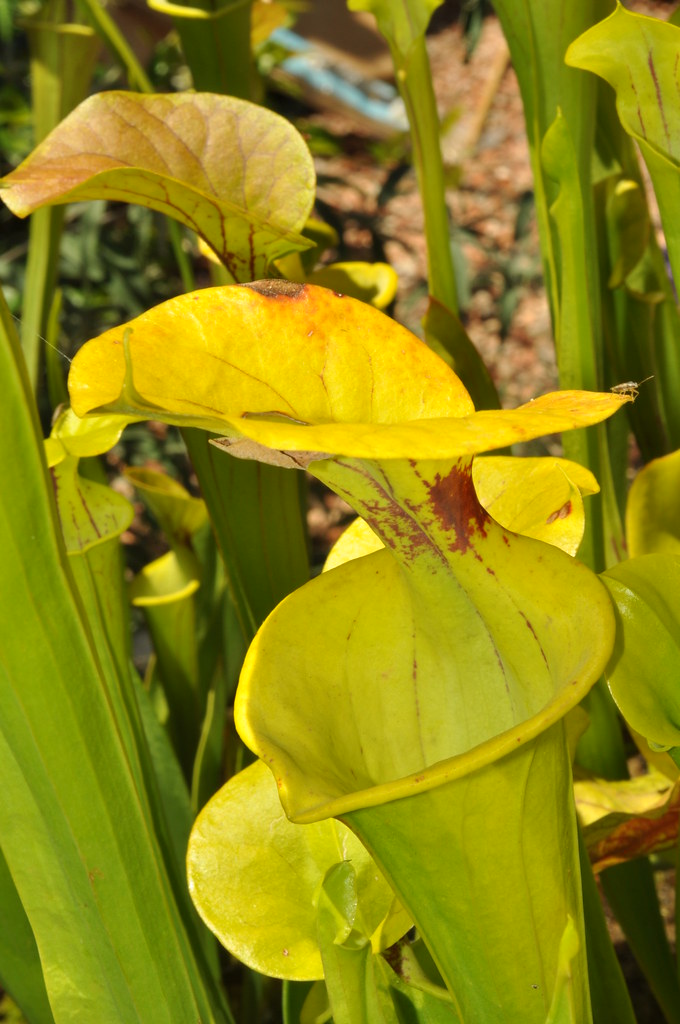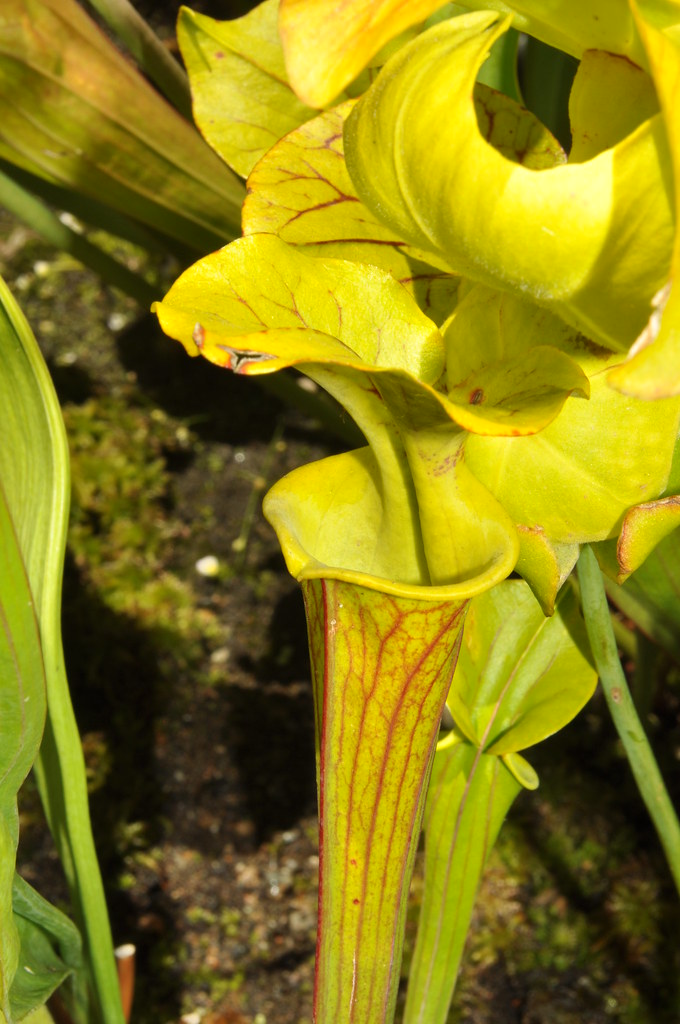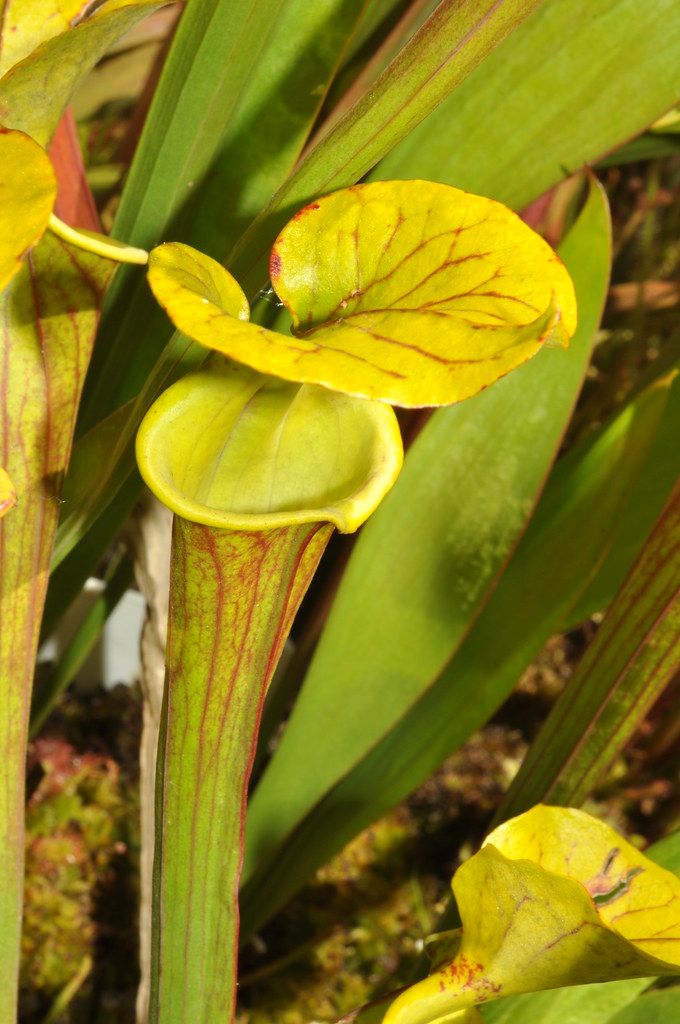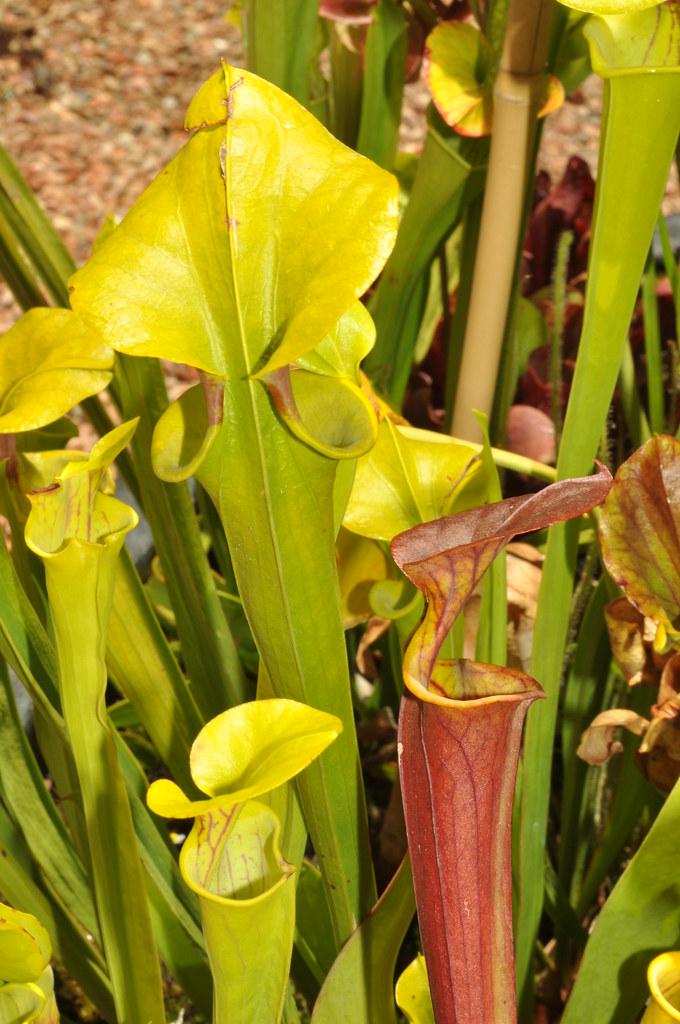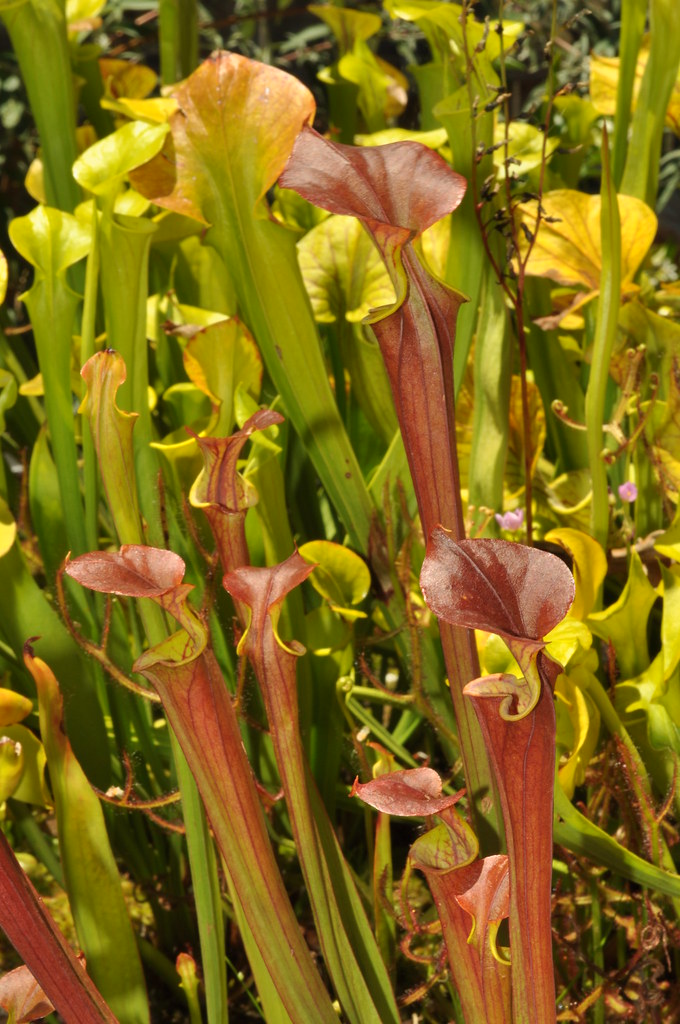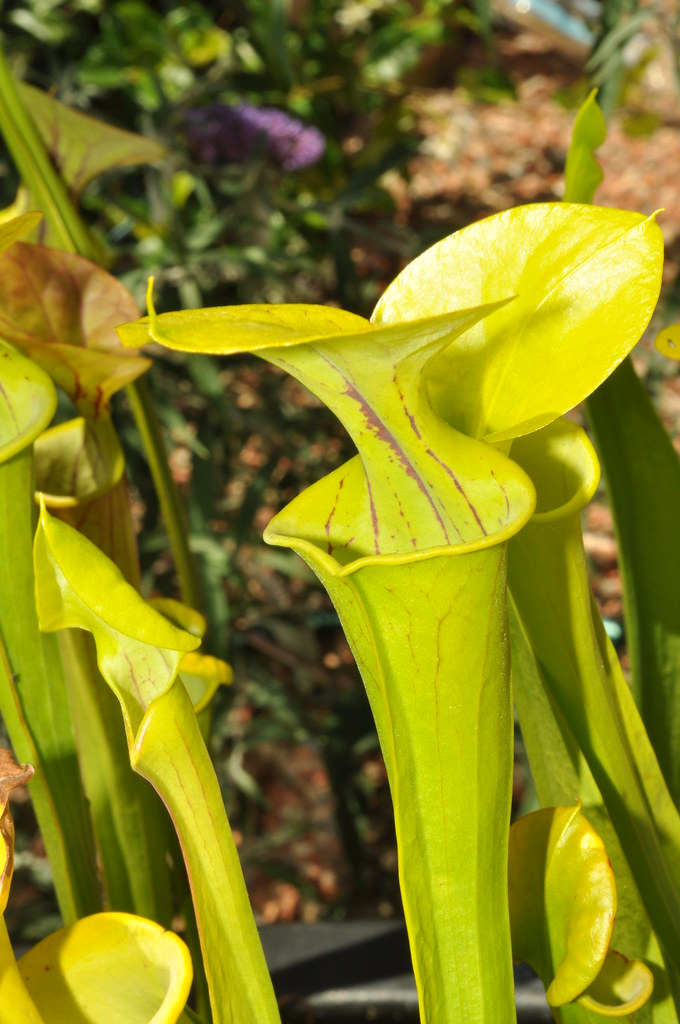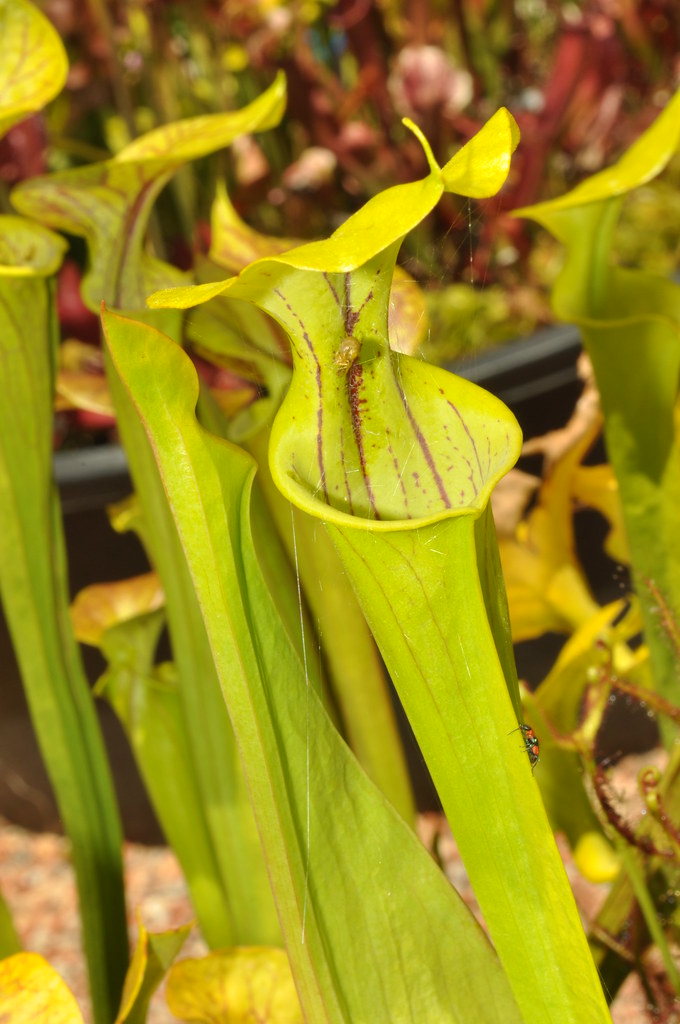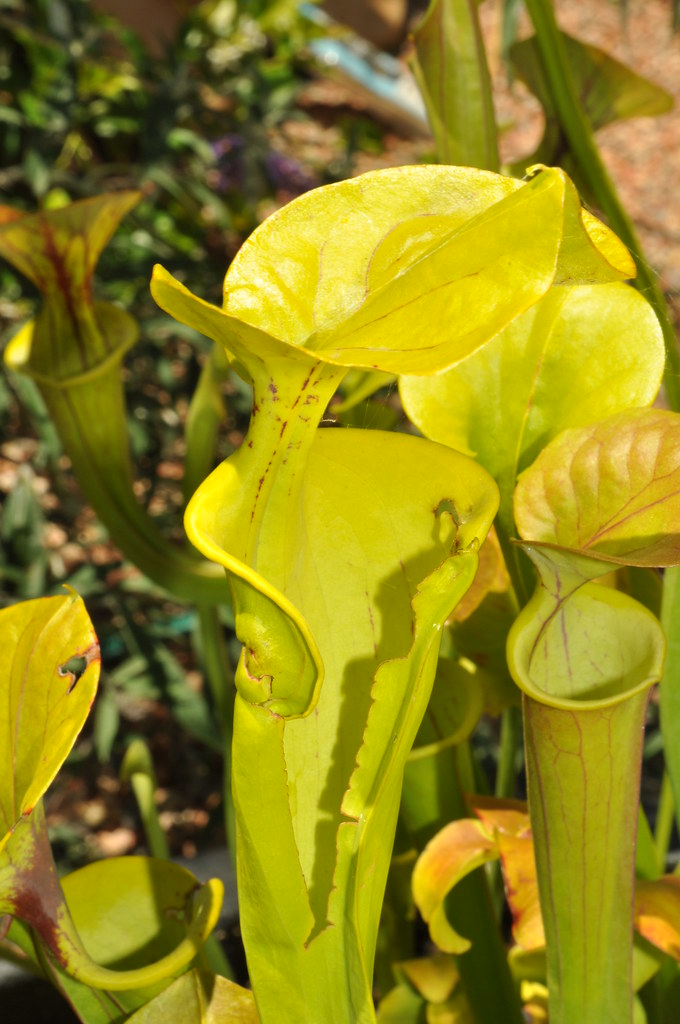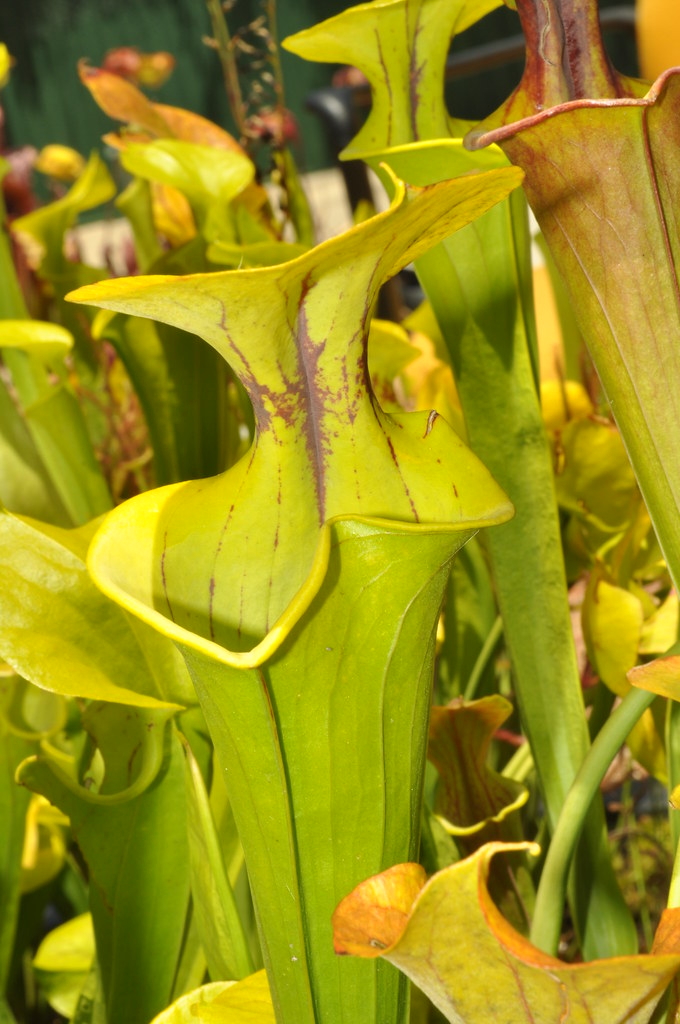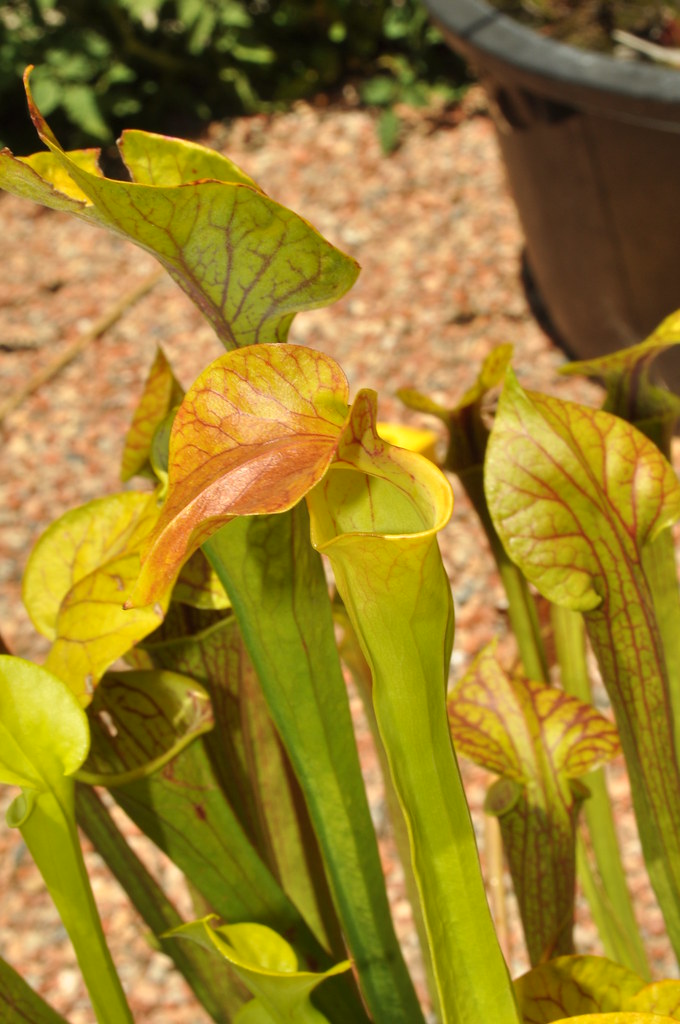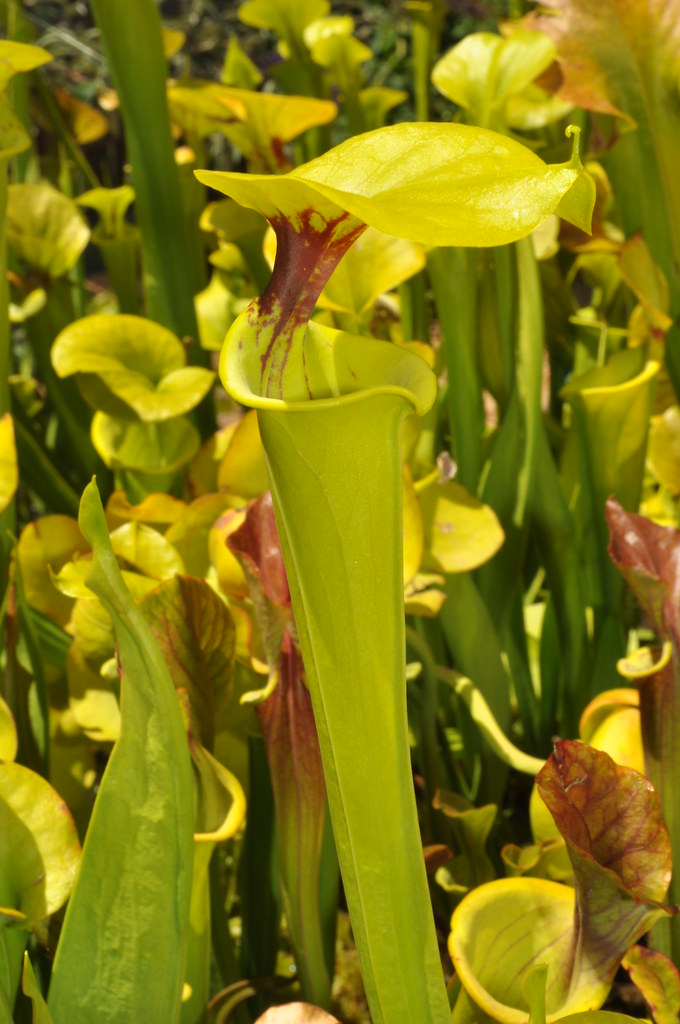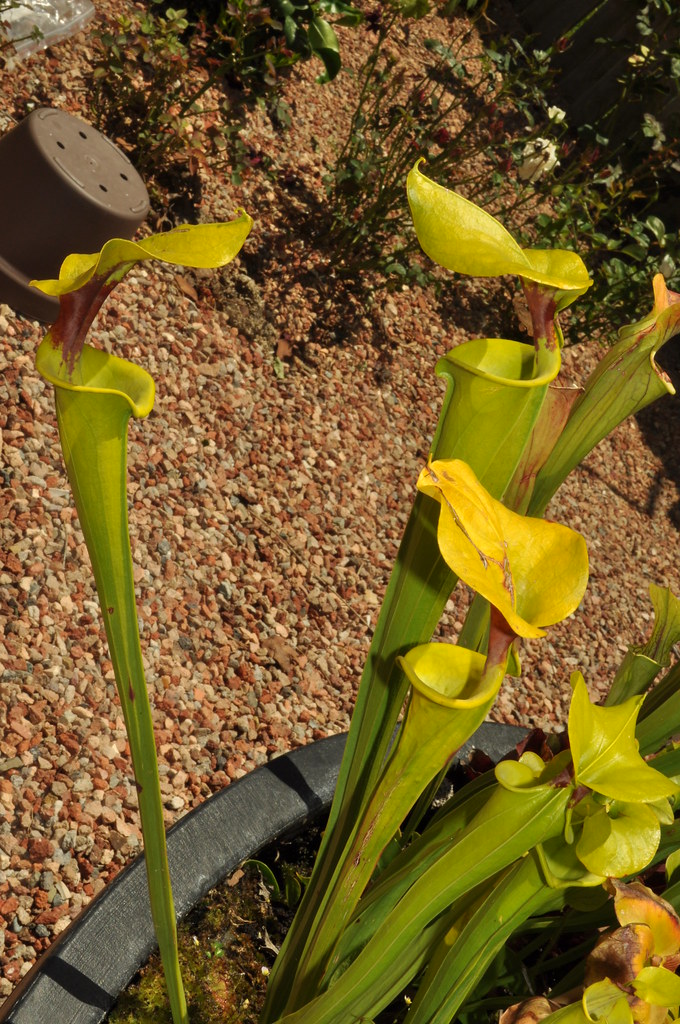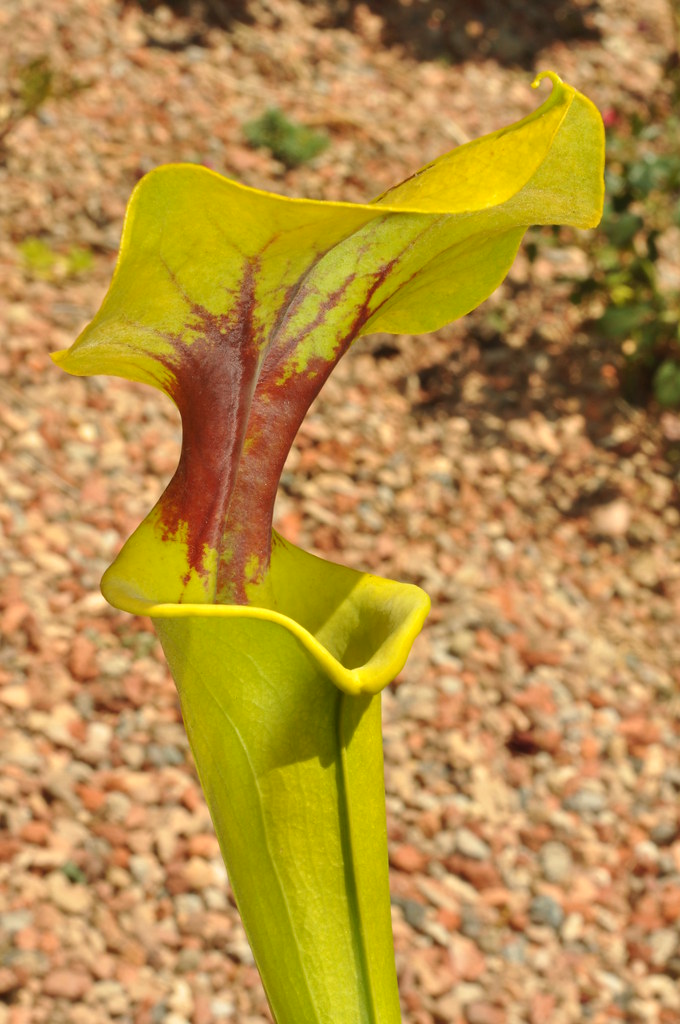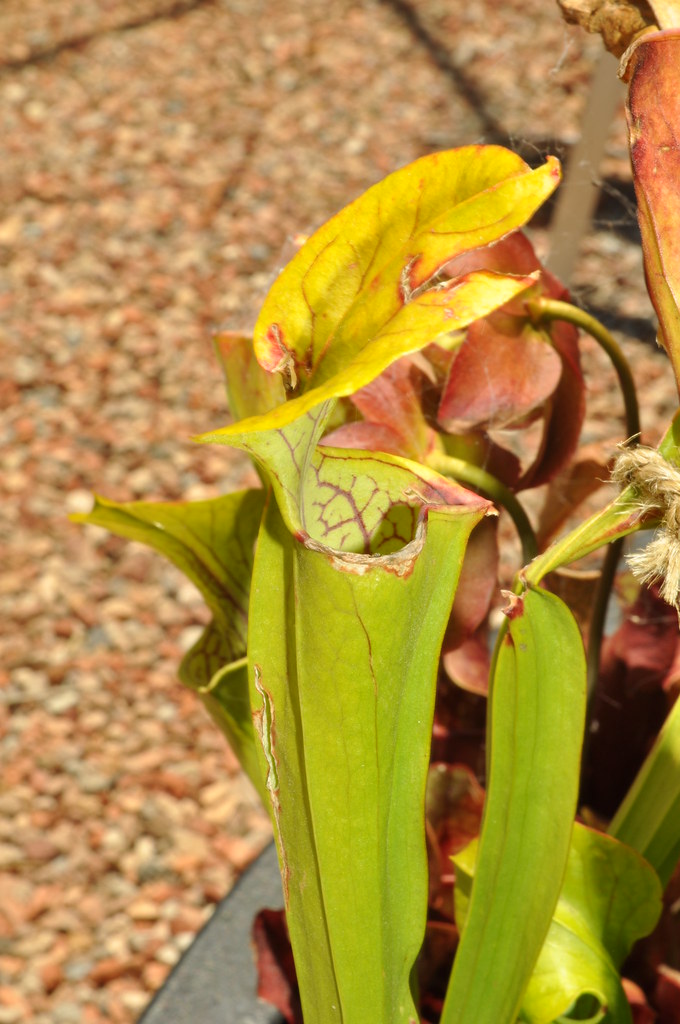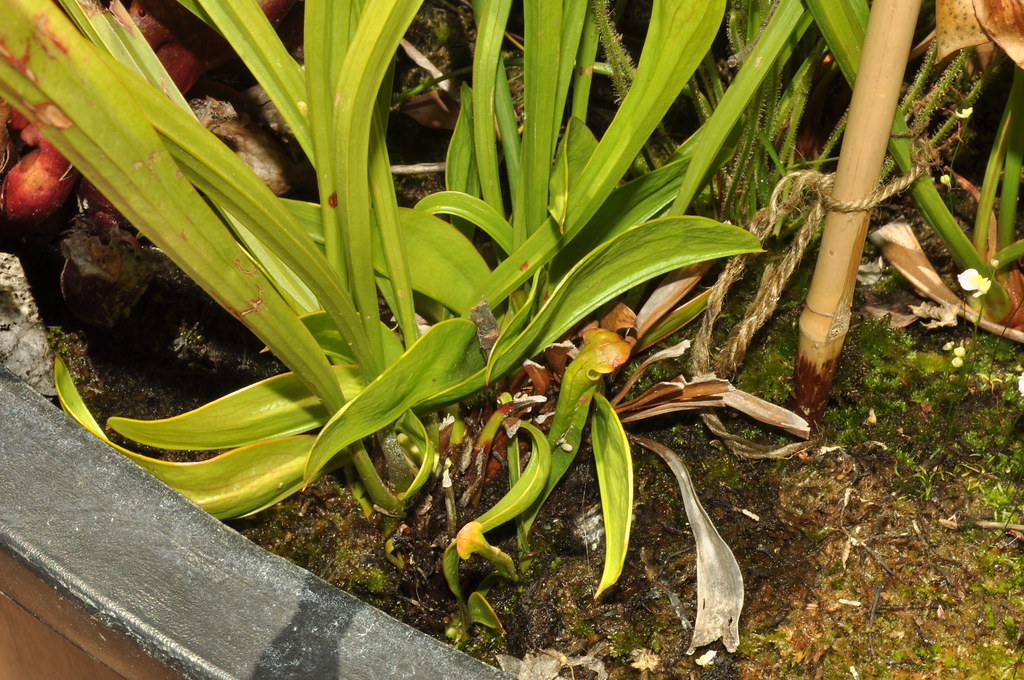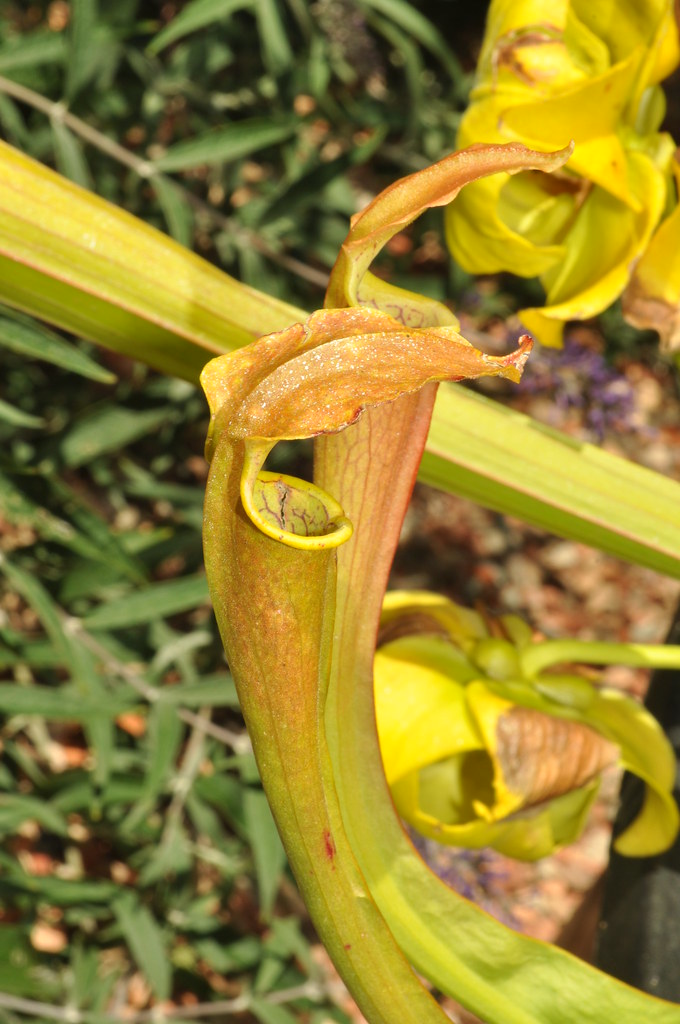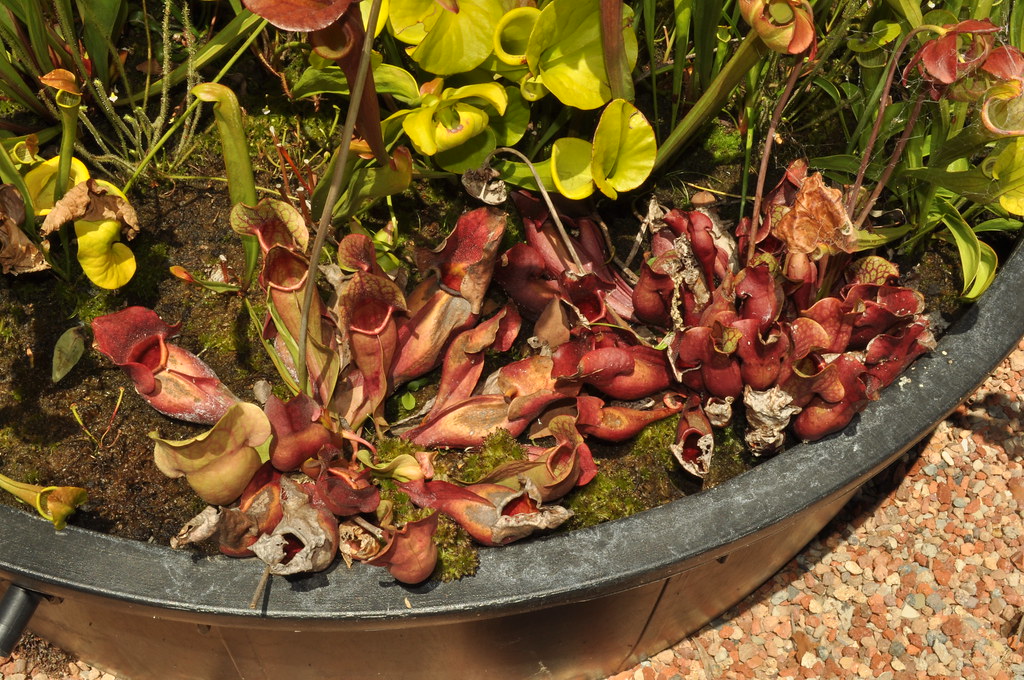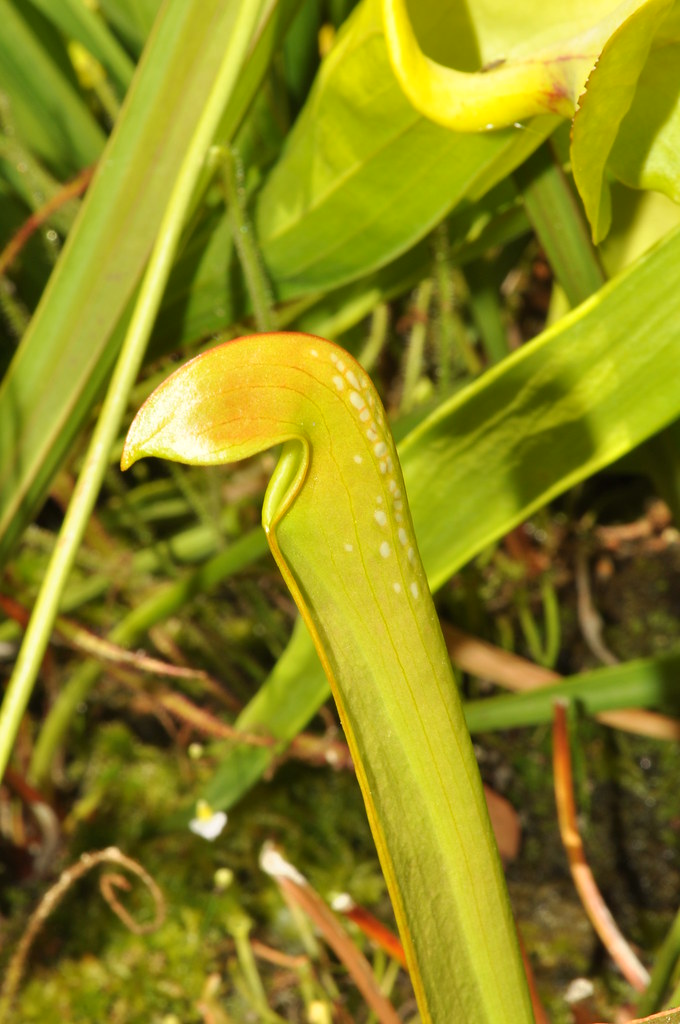Here is the final instalment in the mega photo update of my Sarracenia gardens!
Part 1 dealt with the last of the potted plants and the hybrid garden.
This post – part 3 – deals with the final garden, which as it turns out has every variety of S. flava except the antho free one growing in it. Be warned, this is a photo-intensive post and will take some time to load up.
To start off, here is a particularly special clone (at least to me).
This flava var. cuprea was grown from seed by David Martin in the late 1970s, and my plants are among the few left in cultivation. It produced the tallest pitchers this year, and as a result got the pinched look from the wind. Next year it should be truly stunning. David called it F1 (as in flava 1) and it keeps this name in my collection.
Here is a normal pitcher of F1 with pitchers of the S. flava var. maxima, Harleyville NC clone growing behind. At left is a pitcher of S. alabamensis ssp. alabamensis.
At left is a clone of S. flava var. ornata that remains contentions. A lot of people are convinced this clone has oreophila in it because its petals are small and not so flute - but I have seen so-called flava grown by the same people that put up identical flowers. At any rate, it is a good grower and looks great. At right is a plant from Helmut Kibelis’ collection that can produce 90 cm+ pitchers. I oversplit this plant so it is standing at maybe 30-40 cm tall at the moment. But it should mature into a very fine display.
Here are some more Helmut Kibelis plants. At left is a flava var. flava he imported as what we now call Slack’s Maxima. At right are pitchers of his excellent rubricorpora clone, which made it into the garden by mistake.
Another plant that made it into the garden by mistake was Phil Reytter’s var. atropurpurea. I had meant to put this clone into the red flava garden, but overlooked it. In the left photo are some small pitchers of another Harleyville, NC, plant – a flava var. flava grown from seed by Greg Bourke.
These are some S. flava var. flava bred by Gotcha! Plants. John Creevey produces the best Saracenia in Australia, and he is only going to get better. I like these clones because they lack the dense red throat patch.
Damage to Sarracenia pitchers is frustratingly common, and much of it is beyond anyone’s control. At left is hail damage. We had 10-20 mm hail early last December that did a lot of damage to pitchers open at the time. This one was days off opening and split cleanly down the middle. At right is pinching caused by low humidity/wind, although some clones have this appearance no matter what you do.
This is S. flava var. cuprea, Gotcha! Giant. I oversplit this plant like I did with Helmut’s giant, and it has sulked all season. This pitcher is the only one with a copper hood.
This flava is a bitzer – Australian slang for hybrid (bit of this and a bit of that). In this case, it looks like a rugellii / cut throat, but the venation gives away that it has some var. flava in it. Nonetheless, it is a beautiful and very shapely clone, almost like a sculpture.
This S. oreophila is a very heavy veined form, but has been sulking after being transplanted. As with all oreophila, it has finished up for the year and is busy putting up phyllodia.
To close up this epic series of posts (it has taken all day to take and process the photos, and then post them), here are few other species besides flava growing in this garden. At left is a golden coloured S. alabamensis that comes into its own in Autumn. It will take a few years before it returns to its former glory. Middle are the Chipola giant form of S. rosea and a red clone of S. purpurea ssp. purpurea, and at right a (previously) giant growing S. minor. Like the alabamensis, it will take it a while to regain some size.
I hope you have enjoyed reading this series as much as I have enjoyed my plants.
Till next time, happy growing!
